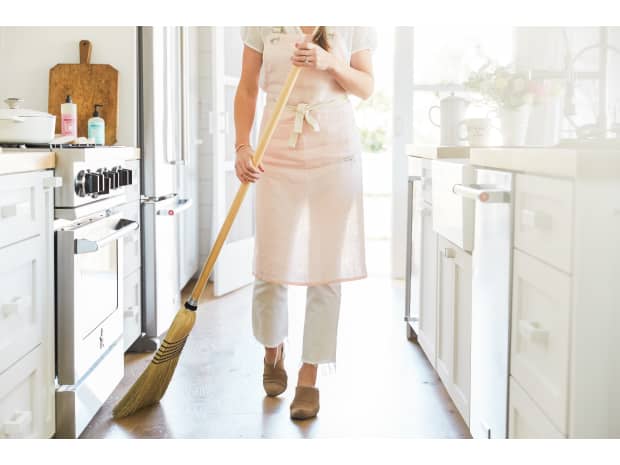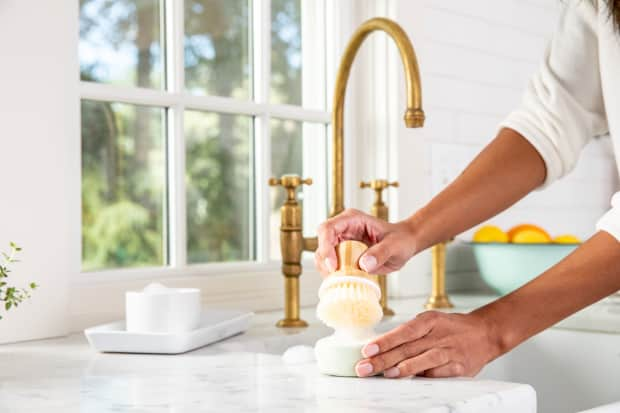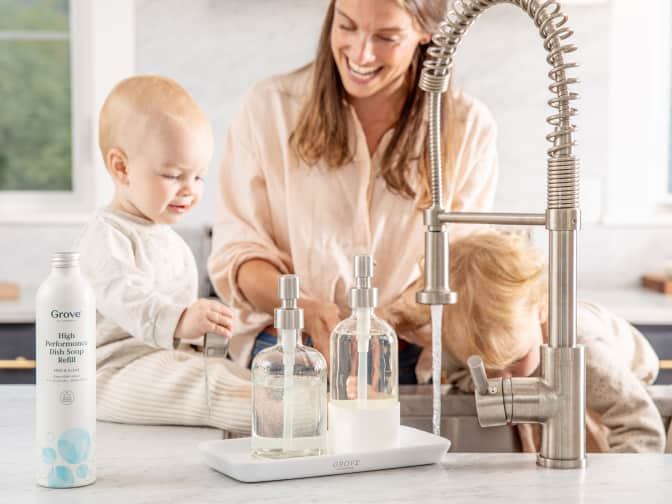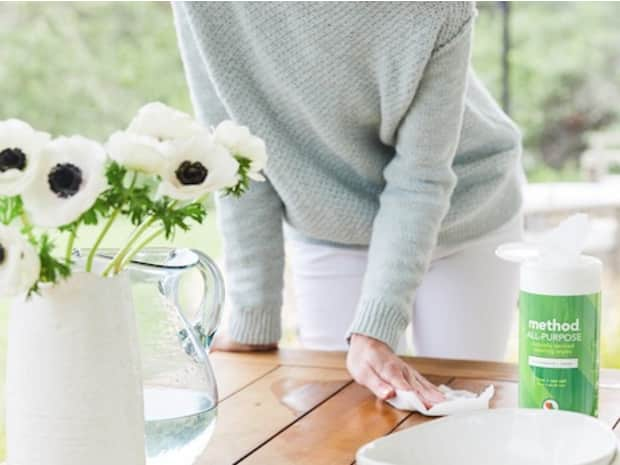
How to clean an oven
Even if your oven a sticky mess, our guide to cleaning ovens makes it easy to tackle a tough task with natural products.
Read More


Last Updated: February 2, 2022
Cleaning brass is admittedly not the most fun chore on the planet. We get it. However, if you want brass that doesn’t look tarnished and lackluster, you must clean it! So let’s talk brass.

Over time, oxygen, water, and other chemicals that are present in the air can cause certain metals, including brass, to tarnish and corrode which is called dezincification. This means they require regular cleaning and maintenance to ensure that your brass items retain their luscious gold color and shine.
In some cases however, it may be better to let your brass items tarnish over time, especially if they are considered to be antiques. Weirdly, tarnish may contribute to increased value. We suppose this is because tarnished brass lends itself to an “antique” look. Consider getting your brass items verified by an antique specialist before you attempt to clean them. In the case of brass-plated items, the thorough rubbing during the cleaning process could end up removing the layer of brass it’s plated with.
Grove Tip
Remember that before you pull out your house cleaning checklist and the clean brass, make sure it’s actually brass. The easiest way to check this is to stick a magnet to your brass items. If the magnet doesn’t stick, you can rest easy!

Brass items require regular dusting to maintain their shine and to prevent a buildup of tarnish. A more intense cleaning is required when you see that the brass has already become tarnished and corroded.

Brass can be cleaned with simple pantry staples, though in some cases you may need a proper brass cleaner. We’ve listed out some items below to help you on your cleaning journey.
If you're in a time bind or want to save some cash and not shell out for a brass-specific cleaner, there are a number of homemade options that can get your brass back to gleaming.
Squirt some ketchup on the brass and let it sit for a while. After a half an hour or so — preferably a full hour — has passed, use a soft, damp cloth or soft toothbrush to rub the brass item or brass jewelry clean. Once you have removed the buildup, rinse and wipe away the ketchup with a clean cloth and dry the brass.
Cut a lemon in half, remove the flesh, and apply salt on the inside. Rub the brass piece with this lemon, reapplying salt as needed. Clean and dry the brass with a soft cloth.
For the toughest stains and buildup, make a paste with vinegar, flour, and salt, ensuring that the salt is completely dissolved. Rub the mixture generously onto the brass item and let it sit for about 10-20 minutes. Rinse and wipe with a damp clean cloth.
These two cleaning agents, when united, create a cleaner that’s tough enough to remove brass buildup with ease. Make a paste of lemon juice and baking soda and apply to brass with a clean cloth. Polish and buff away the grime, and wipe away any residue with a wet cloth. Dry your brass item with a second clean cloth.
If you'd rather go the conventional route, opt for a natural, plant-based cleaner or brass polish to protect your fixture or item from harsh, corrosive ingredients.
The easiest cleaning method we know of is to simply make a mixture of soap and warm water to clean your brass piece or brass jewelry. Soak the brass in this mixture soapy water for a while, then use a soft cloth and a soft-bristled toothbrush to work out the buildup and stains. Rinse and wipe dry with a clean cloth.
Sustainability Tip
For lacquered brass items, cleaning can be tricky. They are covered with a thin, transparent layer of protection, making it almost impossible to clean at home. Most cleaners include acids or chemicals that end up damaging the lacquer. If that sounds like your solid brass items, you may want to seek the help of someone that knows what they are doing. Plus, if you want to make the move to a more sustainable cleaning, one thing that you should learn is how to dispose of chemical cleaning products.
Hot water, baking soda, and salt. You can’t go wrong! Or try one of the homemade methods above — any paste will give your cleaning agents some grittier "oomph" for dealing with tarnished brass.
Yes, although other methods may work better. It will definitely give your brash renewed shine, though!
Once your brass object turns green, it may seem like you’ll never get it’s shining color back — the good news is that just isn’t true. Use a salt-and-vinegar mixture with one cup of white vinegar and one tablespoon salt. The mixture will create a paste that you can rub on your brass to remove the green coloring. After the green oxidation has been completely removed, you can rub a little olive oil on your brass to make it shine like new.
This might surprise you, but yes, you sure can clean brass using just toothpaste. All you need to do is to use reusable paper towels like a clean cloth to put a small amount of toothpaste onto your brass. Let the toothpaste sit for a few minutes, and then rinse it off with cold water.
Although it’s not our personal go-to for cleaning brass, Coca-Cola can be used to clean brass. Actually, any type of cola soda can be used, too. Just rub the cola of your choice on your brass and leave it for about 10 minutes so it can really sink in. Afterward, give it a rinse to reveal your newly cleaned metal.

Even if your oven a sticky mess, our guide to cleaning ovens makes it easy to tackle a tough task with natural products.

Your dishwasher deserves a deep clean to keep it working its best. Our guide breaks down how to do the job, naturally.

Follow our comprehensive checklist of totally tackle-able tasks to make your place shine.

Follow our step-by-step guide to cleaning this relaxing bathroom staple so you can soak sans stress — or germs.